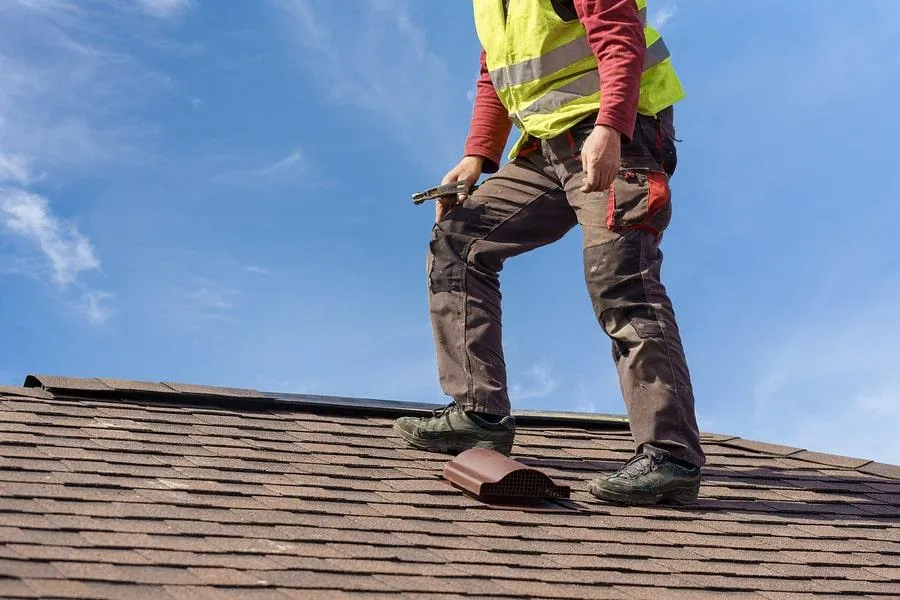WELCOME TO
OUR BLOGS PAGE

Proper Documentation for Successful Claims Payouts: The Power of Effective Documentation for Contractors
“The outcome of your claims success is determined on your first inspection .” - Lateef Farooqui
The Contractor's Field Guide: Proper Documentation for Successful Claims
Introduction:
As contractors, we all want successful projects that are efficient, fairly paid, and completed without revisits or disputes. However, one big challenge we often face is the lack of proper documentation and photos. In our guide, "The Contractor's Field Guide: Proper Documentation for Successful Claims," we will explain why comprehensive documentation is crucial and provide step-by-step instructions to ensure you capture all the necessary information in the field. By following these guidelines, you can streamline your claims management process, improve estimation accuracy, speed up claim settlements, and maximize your claim payouts. Let's explore the importance of proper documentation and how it can lead to efficient claims handling, transparent estimates, and code-compliant and manufacturer-compliant projects.
Photos = Money! Proper documentation will get you paid quicker and paid more every time.👊
The Consequences of Inadequate Documentation:
When it comes to insurance restoration claims, inadequate documentation can lead to frustrations, delays, and reduced payments. Contractors often face challenges due to poorly documented estimates, resulting in disputes and extended claim resolution times. Sales staff, who play a crucial role in this process, are sometimes not properly trained or audited, leading to costly errors and missed opportunities. This lack of documentation and attention to detail can also hinder supplement negotiations, delay claim settlements, and disrupt the overall workflow. At Boss Up Solutions, we understand these challenges and have worked closely with numerous contractors to address them effectively. Our experience in estimation best practices, claims process optimization, and efficient claims handling has empowered contractors to overcome these obstacles and achieve success.
The Path to Proper Documentation:
To overcome these challenges and ensure successful projects, it is crucial to follow a systematic approach that guarantees comprehensive documentation. By implementing the steps outlined in this field guide, contractors can streamline their processes, enhance communication with adjusters, and maximize their chances of getting paid fairly and quickly. Let's dive into the key steps involved in proper documentation.
Step 1: Establishing a Documentation Strategy:
Before even stepping foot on the project site, contractors must establish a solid documentation strategy. This involves developing a systematic approach that ensures comprehensive coverage of the property. The key is to divide the inspection into sections, considering each facet, slope, or elevation separately. By doing so, contractors can ensure that no detail goes unnoticed and have a methodical progression through the property. This comprehensive approach helps in accurately estimating the scope of work, addressing potential code compliance issues, and meeting manufacturer requirements for warranty fulfillment.
Step 2: Following a Methodical Photo Sequence:
One of the critical aspects of proper documentation is capturing photos in the correct sequence. This ensures that the photos tell a clear and cohesive story when reviewing the documentation later. By following the recommended photo sequence, contractors can streamline their documentation process, enhance the clarity and effectiveness of their estimates, and facilitate better communication with adjusters.
The recommended photo sequence includes:
Get CompanyCam special deal!
1. House Number and Front Elevation:
Start by capturing a clear photo of the house number for identification purposes. Then, proceed to take an overview photo of the front elevation, highlighting the overall condition and any visible damages.
2. Divide and Document Front Elevation:
Divide the front elevation into sections if necessary, based on architectural features or damages. Take detailed photos of each section, ensuring all relevant areas are documented. Pay close attention to siding, windows, doors, and any visible signs of deterioration or damage.
3. Transition and Overview:
Use inside or outside corners to mark the transitions between sections. Take an overview photo to indicate the shift to the next section, maintaining a clear progression. This helps in creating a visual narrative and allows for better understanding when reviewing the documentation later.
4. Complete the Full Circumference:
Continue walking around the entire home in a counter-clockwise fashion, capturing photos in the same sequence for
each elevation. This includes sides, back, and any other relevant angles. If any interference, such as a fence, is encountered, resume where you left off after navigating the obstacle. By maintaining this consistent sequence, contractors ensure that the documentation is thorough and follows a logical progression.
5. Additional Structures:
After completing the main home's elevations, focus on any additional structures present on the property, such as garages, sheds, or outbuildings. Follow the same sequence and attention to detail when documenting these structures. Pay close attention to any unique features or damages specific to these structures.
6. Roof Inspection:
Climb onto the roof and document the pitch, materials, layers, installation methods, and other relevant details. Start with an overview photo from a central peak point, capturing the entire roof. Then, focus on each slope, taking both overview and detailed photos. Pay attention to any visible damages, flashing issues, or potential code compliance concerns. Properly documenting the roof is essential for accurate estimation and addressing any necessary repairs or replacements.
7. Utilize Video and Audio:
To enhance the documentation further, contractors should utilize video and audio features. These mediums allow for additional context, sharing important observations, and creating a more comprehensive narrative. Use video to capture a walkthrough of the property, highlighting key areas and explaining any notable observations. Audio can be utilized to provide real-time commentary, such as pointing out potential challenges or additional considerations.
8. Written Annotations and Inventory:
Certain details cannot be effectively captured in photos alone. For such information, contractors should utilize a printout to write on and document the necessary details. This can include noting the number of plumbing vents, inventorying roofing accessories, or any other relevant information. By supplementing photos with written annotations, contractors create a more comprehensive and informative documentation package.
Conclusion:
Proper documentation is the cornerstone of a successful contractor's business process. By following this field guide and taking photos in the suggested sequence, contractors can significantly reduce frustrations, streamline the claims process, and ensure fair and prompt payments. Investing time in training and drills at the job site, utilizing tools like the Estimate Bundle, and emphasizing attention to detail will pay off in the long run. Comprehensive documentation leads to improved efficiency, minimized disputes, and greater opportunities for success. By mastering the art of field documentation, contractors can navigate the claims process with confidence, optimize estimation accuracy, and achieve optimal results. Trust in the power of proper documentation to transform your business and elevate your success in the insurance restoration industry.
Checklist for Proper Inspection:
House Number and Front Elevation:
- Capture clear photo of house number for identification.
- Take overview photo of the front elevation.
Divide and Document Front Elevation:
- Divide front elevation into sections if necessary.
- Take detailed photos of each section, documenting all relevant areas.
Transition and Overview:
- Use inside or outside corners to mark transitions between sections.
- Take overview photo to indicate shift to next section.
Complete the Full Circumference:
- Walk around the entire home in a counter-clockwise fashion.
- Capture photos of each elevation in the same sequence.
Roof Inspection:
- Climb onto the roof and document pitch, materials, and installation methods.
- Take overview and detailed photos of each slope.
Utilize Video and Audio:
- Enhance documentation with video and audio recordings.
- Provide additional context and observations.
Written Annotations and Inventory:
- Use printouts to write annotations and inventory details.
- Document specific information that cannot be captured in photos.
Additional Structures:
- Document any additional structures, such as garages or sheds.
- Follow the same sequence and attention to detail.
By following this checklist, contractors can ensure comprehensive documentation, streamline the claims process, and maximize their claim payouts.
© Copyright 2023. Boss Up Solutions All Rights Reserved.



